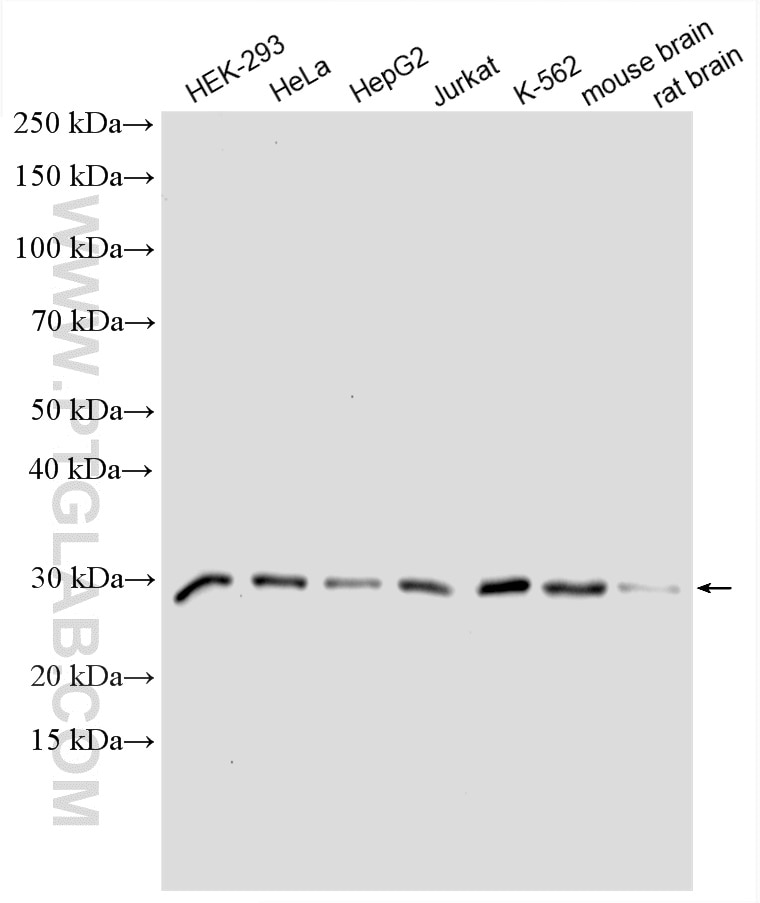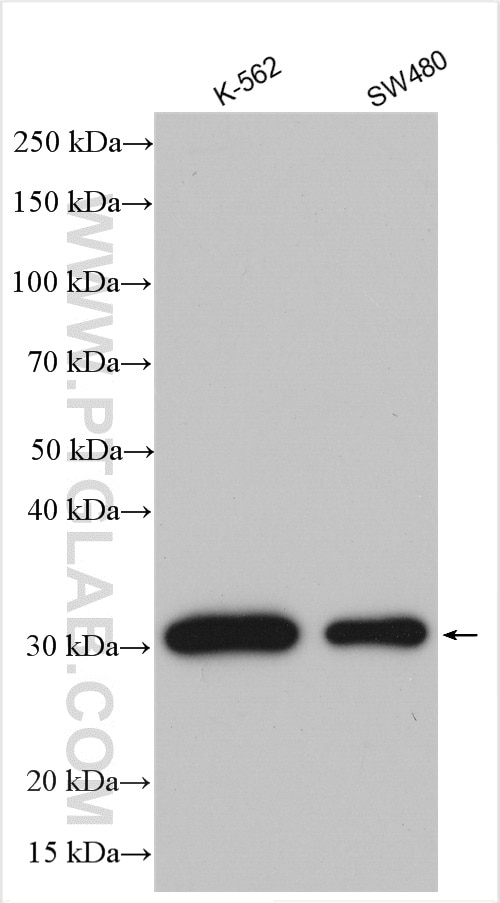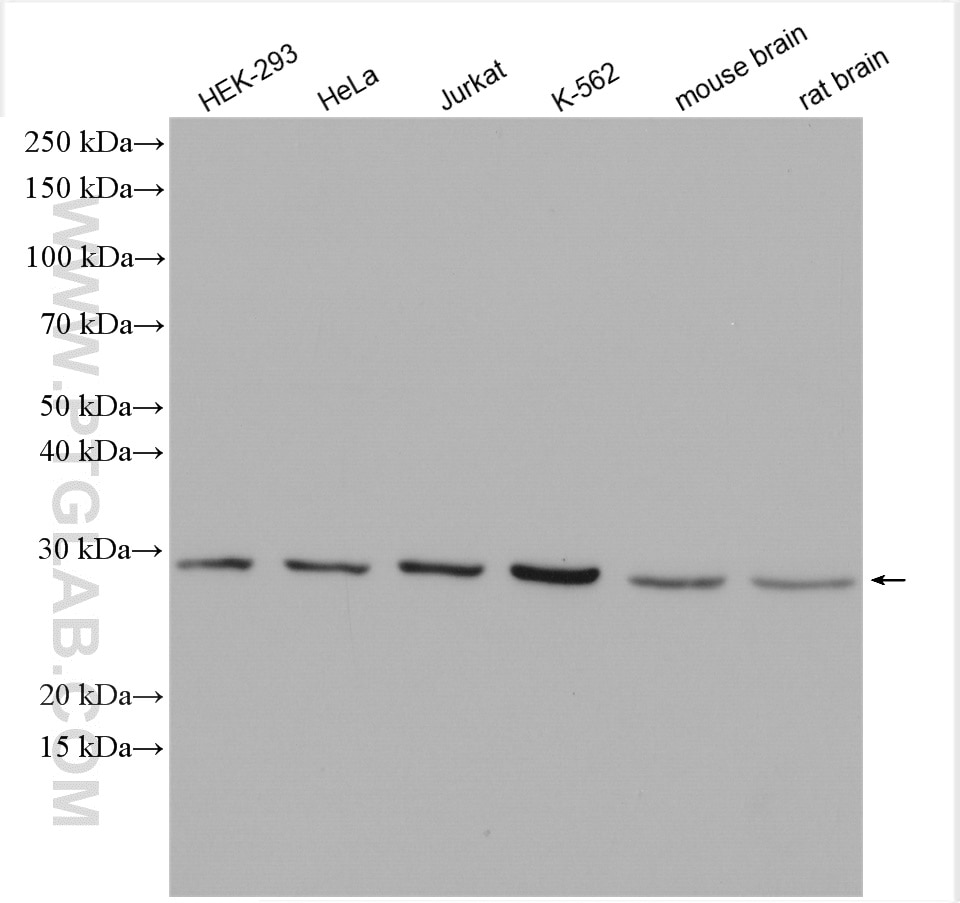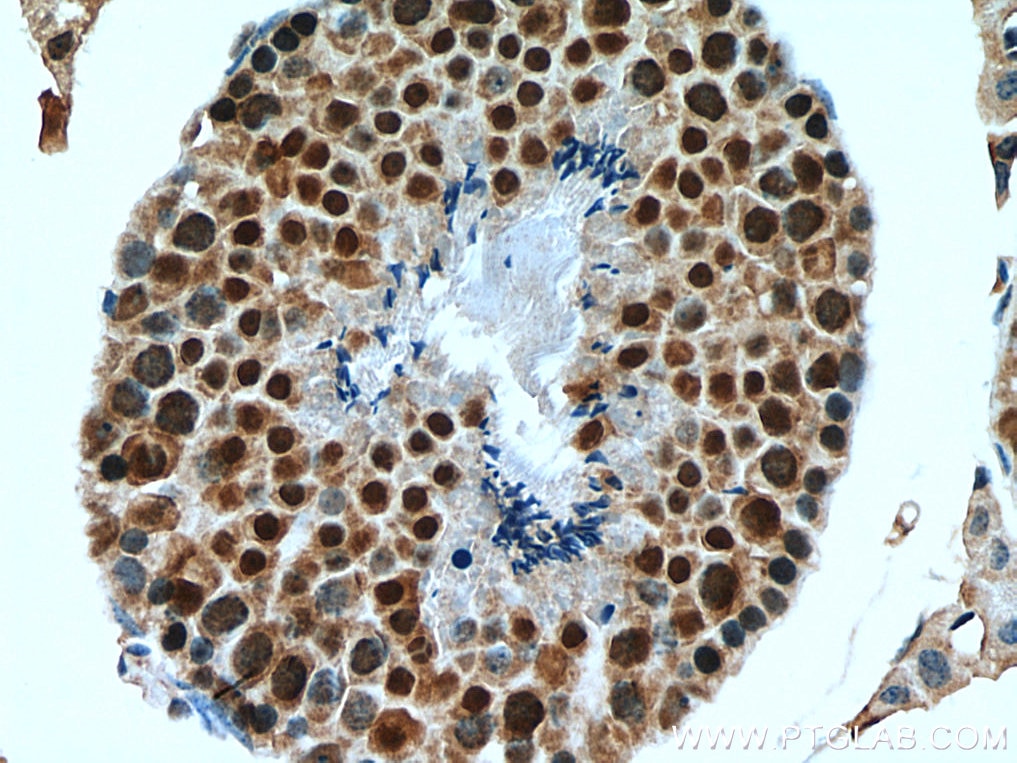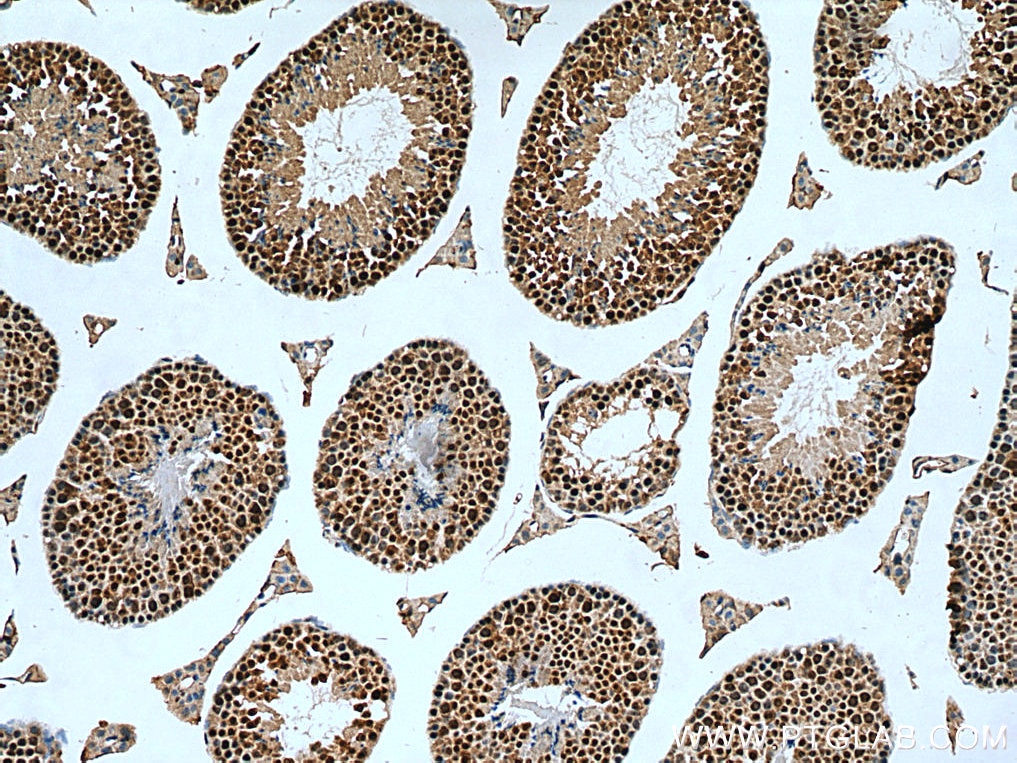GID8 Polyklonaler Antikörper
GID8 Polyklonal Antikörper für WB, IHC, ELISA
Wirt / Isotyp
Kaninchen / IgG
Getestete Reaktivität
human, Maus, Ratte
Anwendung
WB, IHC, IF, ELISA
Konjugation
Unkonjugiert
Kat-Nr. : 24479-1-AP
Synonyme
Geprüfte Anwendungen
| Erfolgreiche Detektion in WB | HEK-293-Zellen, HeLa-Zellen, HepG2-Zellen, Jurkat-Zellen, K-562-Zellen, Maushirngewebe, Rattenhirngewebe, SW480-Zellen |
| Erfolgreiche Detektion in IHC | Maushodengewebe Hinweis: Antigendemaskierung mit TE-Puffer pH 9,0 empfohlen. (*) Wahlweise kann die Antigendemaskierung auch mit Citratpuffer pH 6,0 erfolgen. |
Empfohlene Verdünnung
| Anwendung | Verdünnung |
|---|---|
| Western Blot (WB) | WB : 1:500-1:2000 |
| Immunhistochemie (IHC) | IHC : 1:1000-1:4000 |
| It is recommended that this reagent should be titrated in each testing system to obtain optimal results. | |
| Sample-dependent, check data in validation data gallery | |
Veröffentlichte Anwendungen
| WB | See 8 publications below |
| IHC | See 1 publications below |
| IF | See 1 publications below |
Produktinformation
24479-1-AP bindet in WB, IHC, IF, ELISA GID8 und zeigt Reaktivität mit human, Maus, Ratten
| Getestete Reaktivität | human, Maus, Ratte |
| In Publikationen genannte Reaktivität | human, Maus |
| Wirt / Isotyp | Kaninchen / IgG |
| Klonalität | Polyklonal |
| Typ | Antikörper |
| Immunogen | GID8 fusion protein Ag19751 |
| Vollständiger Name | chromosome 20 open reading frame 11 |
| Berechnetes Molekulargewicht | 228 aa, 27 kDa |
| Beobachtetes Molekulargewicht | 30 kDa |
| GenBank-Zugangsnummer | BC032120 |
| Gene symbol | GID8 |
| Gene ID (NCBI) | 54994 |
| Konjugation | Unkonjugiert |
| Form | Liquid |
| Reinigungsmethode | Antigen-Affinitätsreinigung |
| Lagerungspuffer | PBS with 0.02% sodium azide and 50% glycerol |
| Lagerungsbedingungen | Bei -20°C lagern. Nach dem Versand ein Jahr lang stabil Aliquotieren ist bei -20oC Lagerung nicht notwendig. 20ul Größen enthalten 0,1% BSA. |
Hintergrundinformationen
The GID8 protein is a component of the Glucose-Induced Degradation-deficient (GID) complex, which plays a key role in ubiquitin-mediated protein degradation, a pathway used to regulate protein turnover in eukaryotic cells. Initially discovered in yeast, GID8 acts as a scaffold protein that is essential for the assembly of the multi-subunit GID complex and for substrate recognition. This complex plays a significant role in metabolic regulation, such as degrading fructose-1,6-bisphosphatase (FBPase) during the shift from gluconeogenesis to glycolysis. In humans, GID8 is part of the CTLH complex, which is associated with various cellular processes including cell cycle regulation, apoptosis, and cancer progression.
Protokolle
| PRODUKTSPEZIFISCHE PROTOKOLLE | |
|---|---|
| WB protocol for GID8 antibody 24479-1-AP | Protokoll herunterladen |
| IHC protocol for GID8 antibody 24479-1-AP | Protokoll herunterladenl |
| STANDARD-PROTOKOLLE | |
|---|---|
| Klicken Sie hier, um unsere Standardprotokolle anzuzeigen |
Publikationen
| Species | Application | Title |
|---|---|---|
PLoS Genet Role of Bicaudal C1 in renal gluconeogenesis and its novel interaction with the CTLH complex. | ||
Sci Rep Tagging enhances histochemical and biochemical detection of Ran Binding Protein 9 in vivo and reveals its interaction with Nucleolin. | ||
bioRxiv Genome-wide screen of Mycobacterium tuberculosis- infected macrophages identified the GID/CTLH complex as a determinant of intracellular bacterial growth | ||
Cancer Lett YTHDF1 regulates GID8-mediated glutamine metabolism to promote colorectal cancer progression in a m6A-dependent manner | ||
Mol Cell mTORC1-CTLH E3 ligase regulates the degradation of HMG-CoA synthase 1 through the Pro/N-degron pathway | ||
Nat Commun Genome-wide screen of Mycobacterium tuberculosis-infected macrophages revealed GID/CTLH complex-mediated modulation of bacterial growth |
Rezensionen
The reviews below have been submitted by verified Proteintech customers who received an incentive for providing their feedback.
FH H (Verified Customer) (09-27-2020) | GID8 was pulled down with MAEA-flag, so I could tell which band is GID8. But without IP, it would be difficult to tell which band is the GID8, because the on-target band signal is too weak, while off-target band signals are strong in HEK293T cells
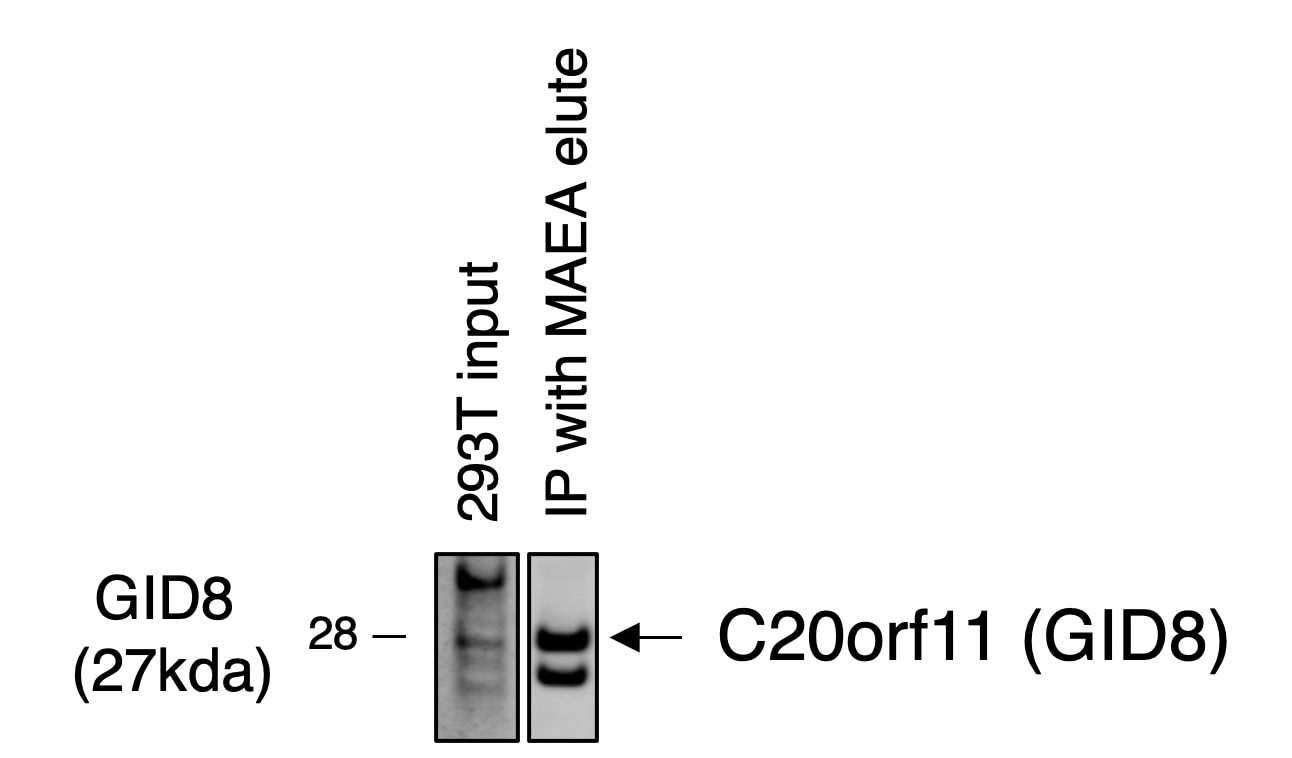 |
